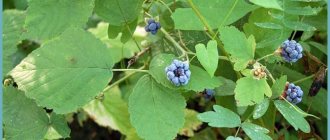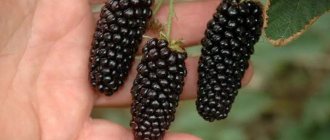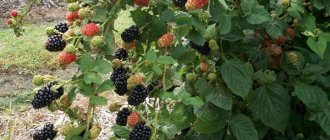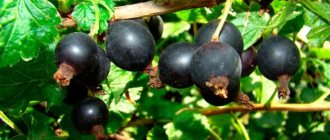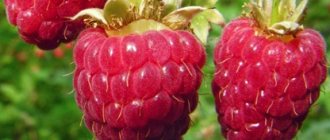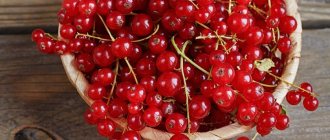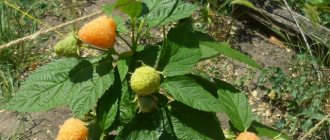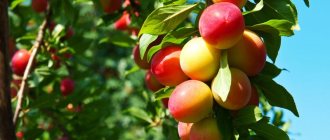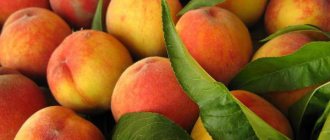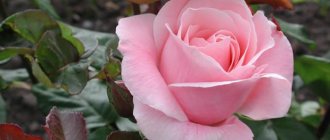What are black raspberries and blackberries?
Even though black raspberries and blackberries are considered berries, they are botanically fruits. This is because they are considered infructescences, which consist of small drupes, or individual bumps on the fruit. Each drupe contains a seed.
Black raspberry (lat. Rubus occidentalis L.) is a special variety of the more common red raspberry, growing in Europe and North America. It is also called wild black raspberry ().
Black raspberries prefer cooler climates and are harvested in July. Thus, they are not as widely available as blackberries ().
The blackberry is another member of the genus or subfamily Rubus, so it is similar to the black raspberry. It grows in many parts of the world, including North America and Europe, so you may be able to find it fresh in markets all year round, depending on where you live ().
Summary:
Botanically, black raspberries and blackberries are related, but they are completely different fruits. Black raspberries have a very short growing season, while blackberries are more widely available year-round.
Varieties of black raspberries
Breeders are constantly working to develop new varieties of black raspberries, which are considered a promising crop. Thanks to their efforts, new products often appear on the market.
- Cumberland. One of the oldest varieties of black raspberries. It was obtained at the end of the 19th century and is still leading. Black Cumberland raspberries have a very beautiful bush shape with graceful curved stems. The variety does not form root suckers, so the bushes do not grow. The yield is not very high compared to modern hybrids and varieties; the plant produces only 200 to 500 g of berries per bush;
- Earley Cumberland. The berries of this variety are larger than those of the Cumberland variety, which became one of the parents of this variety of black raspberries. Their average weight is 2–2.2 g. The fruits of the Early Cumberland variety are round in shape, colored black and purple, have a very sweet taste and a fairly dense consistency;
- Ember. An early variety of domestic selection. The shoots are long, reaching 2.5 m and bend, forming an arch. The spines are small. The berries are quite small, but juicy, with a pleasant sweet and sour taste and blackberry aroma. The productivity of Coal is high, the variety is resistant to both drought and frost;
- Boysenberry. Shoots grow up to 3 m in length. Unlike other varieties of black raspberries, Boysenberries do not have thorns. The berries have an oblong shape, they are very large, and the surface is shiny. The variety is productive and tolerates frost quite well;
- Bristol. The variety is considered one of the best. The fruits have a sweet taste and are very juicy. The shape of the berries is round, the surface is covered with a bluish coating;
- New Logan. A high-yielding and early-ripening variety with shiny and very tasty berries. The bush reaches a height of 2 m. It does not tolerate frost well, so the plant needs additional shelter for the winter;
- Litach. An early variety of black raspberry, bred by Polish breeders. The bush is vigorous, its rigid and curved shoots are strewn with numerous large thorns. The fruits are spherical in shape and covered with a grayish or bluish coating;
- Luck. The yield of this variety of black raspberry is high, up to 6 kg of selected medium-sized berries can be harvested from one bush, their average weight is 1.7–1.8 g;
- Gift of Siberia. Black raspberry bushes of this variety are tall and powerful. The berries have a dessert taste, but they are not very large, the weight of an individual fruit is on average 1.6 g. The advantage of the Gift of Siberia is considered to be its resistance to pests and common diseases;
- Turn. The fruits have dense pulp, so they tolerate transportation well over long distances. Productivity is approximately 5.4 kg per bush. The fruiting period is short;
- Black Jewel. The raspberry stems of this variety, unlike other varieties, are erect. Black Jewel is a winter-hardy and very productive variety. The berries are colored black and have a bluish coating. The shape is round, the weight reaches 2.5 g. The taste is sweet with a blackberry aroma.
Cumberland is one of the oldest varieties of black raspberries. The berries of black raspberries of the Earley Cumberland variety are quite large. Black Jewel is a very productive variety. New Logan is an early ripening variety with very tasty berries. The berries of black raspberries of the Litach variety are covered with a grayish or bluish coating. The yield of the Luck variety is high, from one bush you can pick up to 6 kg of berries Black raspberry bushes of the Dar of Siberia variety are tall and powerful Black raspberries of the Povorot variety can withstand transportation over long distances The fruits of black raspberries Bristol have a sweet taste and are very juicy Black raspberries of the Ugolyok variety are juicy with a pleasant sour-sweet taste
How to distinguish blackberries from black raspberries
Blackberries and black raspberries are often mistaken for each other due to their similar appearance.
When they grow on bushes they are difficult to distinguish from each other. Blackberries can be more thorny than black raspberries, but there are also thornless blackberries.
However, after harvesting the difference is easier to notice. Just look at the side of the fruit where it was torn from the stem. Black raspberries leave some of the fruit on the stem from which they are picked, which is why they have a hollow core.
With blackberries, the entire fruit comes off the stem, so they will have a white or green kernel that attached them to the stem.
Both are soft, perishable fruits, but because of their hollow core, black raspberries are softer and even more perishable than blackberries.
If you compare them side by side, you'll also notice that blackberry drupes are smooth and shiny, while raspberries are covered in tiny white hairs.
The two fruits also have different flavor profiles, with blackberries being tart and black raspberries being sweeter.
Summary:
Blackberries and black raspberries are often confused with each other because they are similar. The best way to tell them apart is to check the side on which the fruit is attached to the stem. Black raspberries have a hollow core, tiny hairs, and a sweeter flavor than blackberries.
Features of reproduction
The main distinguishing feature of black raspberry varieties is the method of propagation. Since the plant does not produce shoots, two options for obtaining planting material are used - rooting the tips of the growth and layering.
Reproduction by rooting tops
After fruiting comes to an end, and this is somewhere in mid-August, the lashes will begin to “gravitate” towards the ground, trying to cling to the soil. To obtain seedlings with a good root system, the tops are pinned to the soil and lightly sprinkled with soil. After 1.5 months, completely viable roots will form at the point of contact with the soil, and the black raspberry seedling can be transplanted to a permanent place in the fall. If the root system is weak, it is better to leave the plant until spring.
Reproduction by layering
Some gardeners specifically grow cuttings. In mid-summer, some of the branches are taken away from the bush, pressed to the ground and not the top, but the middle of the stem is buried. In this case, 2 full-fledged seedlings are obtained from one branch.
Due to their external similarity, people often confuse blackberries and black raspberries. These two cultures are not widespread, so there is little experience to recognize them.
But there are distinctive features, having studied which, it becomes impossible to mistake one for the other. Let's look at how blackberries differ from black raspberries.
Both are rich in nutrients
No matter what you choose from the market, both blackberries and black raspberries are very nutritious. Here are the nutrition facts for 1 bowl (140 grams) of blackberries and black raspberries, respectively (, ):
| Blackberry | Black raspberry | |
| Calories | 62 kcal | 70 kcal |
| Protein | 2 grams | 2 grams |
| Fat | 1 gram | 1 gram |
| Carbohydrates | 14 grams | 16 grams |
| Cellulose | 8 grams, 31% of recommended daily intake (RDI) | 9 grams, 32% of RDI |
| Vitamin C | 30 mg, 50% of RDI | 35 mg, 58% of RDI |
Both fruits are low in calories and high in fiber, which helps regulate blood sugar and digestive health. One serving (140 grams) of any of the fruits provides an adult with more than 30% of the RDA for this nutrient.
A serving of either fruit also adds significant amounts of vitamin C to your diet, which is important for maintaining a healthy immune system and connective tissue ().
Additionally, like other berries, both fruits contain health-promoting compounds called polyphenols ().
These plant compounds have antioxidant properties, which means they can help protect cells from oxidative damage. In doing so, they help reduce the risk of developing certain chronic diseases, such as cancer, heart disease and diabetes (, ,).
Anthocyanins are a type of polyphenol that gives blackberries and black raspberries their inky black color. Both fruits contain impressive amounts of anthocyanins, which are associated with healthier blood vessels and can protect cells from mutations and cancer (, ,).
Summary:
Both fruits are low in calories and are excellent sources of fiber, vitamin C, and antioxidant compounds called anthocyanins. Eating them may benefit your digestive system and blood vessels and potentially even reduce your risk of cancer.
Care
Black raspberries are considered an unpretentious crop. Caring for it comes down to pruning, several waterings and fertilizing per season. And lush, well-groomed bushes with gracefully curved shoots will decorate the area and attract attention.
Top dressing
The crop requires three feedings per season. The procedure begins when the plant has flowered. To do this, make an infusion of chicken droppings (1 part to 16 parts water) or manure (1:6). To 10 liters of prepared nutrient solution add 1 liter of wood ash and 50 g of superphosphate. One bucket of fertilizer is applied under the black raspberry bush, pouring it around the perimeter of the plantings. After applying the fertilizer, the soil is moistened abundantly. The second feeding with the same solution is carried out during the period of fruit ripening, and the third - after collecting the first berries.
Creating support and cutting features
Black raspberry shoots are very long; in the first year after planting they grow erect, and in the second they take the shape of an arch. In this case, the tops, touching the ground, can take root, as a result of which the plantings will be thickened. Because of this feature of the crop, it is very important to take care of the plant’s support in advance. To do this, make a wire trellis. At the beginning and end of the row, wooden posts approximately 2 m high are dug in, onto which strong wire is attached in three rows, placing it at a height of 0.5 m, 1.8 m and 2.1 m.
Another option for support for powerful shoots can be an arch. It is installed between two bushes, and the stems are attached to the arches. This design is not only functional, but also very decorative.
Black raspberry shoots will grow long and curved, so you need to take care of support in advance
Black raspberries are pruned twice a year: the first procedure is at the end of June, and the second in late autumn. When performing summer pruning, the apical part of the stems is cut off at a height of 1.7 m. This contributes to more intensive development of lateral branches, the number of which can reach 6–8 pieces, which will increase the yield of the bush. In the fall, it is necessary to cut out 2-year-old shoots that have already produced fruit. And 1-year-old stems are shortened to 30–50 cm above the ground.
Recent Entries
5 working ways to use tar in the garden 7 indoor plants that help you get married even in adulthood Indoor plants that can bloom in trouble
Preparing for winter
Black raspberries do not tolerate frosts as well as their red-fruited relatives, so it is necessary to carefully prepare them for wintering. To do this you need:
- Carefully bend the shoots to the ground.
- Secure them with metal brackets.
- You can put spruce branches on the plantings, which is the best natural insulation.
If the winter is not snowy, then snow is shoveled onto the bushes and sawdust is poured on it, which will help prevent melting.
Black raspberry shoots must be bent to the ground and secured with metal brackets
How to Include Blackberries and Black Raspberries in Your Diet
Both of these berries are very tasty when eaten fresh. Since they are soft and perish quickly, store them in the refrigerator and use within 2-3 days.
Fresh black raspberries and blackberries can add rich color to a fresh fruit salad or green leafy vegetable, go well with oatmeal or yogurt, or can be included in a cheese platter.
Both berries are also available frozen. In fact, due to the fact that black raspberries have a short growing season, you can find them frozen or you can freeze them yourself.
You can enjoy frozen berries at any time. In addition, even frozen they are very useful, since their antioxidants remain intact even when frozen ().
If you use frozen berries, keep in mind that they will be soft and mushy once thawed, but they will taste great. They are great for baking, as a sauce on pancakes or waffles, or in smoothies.
Another way to enjoy fresh or frozen blackberries and black raspberries is to make them into jam and enjoy them all year round. Because blackberries are more tart and sour, blackberry jam may need a little extra sugar, so taste before canning.
Summary:
Fresh blackberries and black raspberries spoil very quickly, so store them in the refrigerator and use them within a few days. Delicious ways to use these berries include adding them to salads, smoothies and sauces, or using them to make jam.
Characteristics and differences
Not everyone knows what Ezhemalina is. Therefore, it is so important to study the characteristics of the culture, the rules of breeding and care, in order to then give yourself the pleasure of enjoying the piquant taste of unusual fruits.
The first to become known was Loganberry, which appeared due to an accidental crossing of two bushes growing nearby in the garden of a Californian judge. This story was not ignored by scientists, and their subsequent experiments gave impetus to breeders to create a completely new berry crop.
Loganberry - the first blackberry-raspberry hybrid
The description of the Ezhmalina Loganberry variety can be represented by the following characteristics:
- the bush produces large fruits and is famous for its large harvests;
- the culture is unpretentious to care;
- produces fairly long shoots compared to prototypes;
- raspberry blackberries are more resistant to frost;
- the fruits have absorbed all the beneficial properties of related crops.
All other features of the plant (direction of branch growth, number of replacement shoots, weight and color of fruits) are relative and each variety has its own.
True, raspberries also transmitted their diseases to the culture, but Loganberry blackberries have higher immunity. The taste of the berries is slightly inferior to their predecessors, but this is more than compensated for by other advantages.
Productivity
Blackberry raspberries bloom in the first half of May, and already in mid-June you can harvest. The fruiting period itself lasts an average of a month. The number of berries taken directly depends on the age of the bush - everything is increasing.
Starting from the second year after planting, few fruits appear on the plant; they are not as large as the gardener expected. But every year their number on the branches increases, and they are actively gaining mass. From a three-year-old bush it will be possible to take an average of 5-6 kg and at least 12 tons per hectare.
Harvest berry
Aronia raspberries are certainly different from blackberries, and have the following characteristic features:
- The main difference between blackberries is that the receptacle breaks off at the site of attachment to the stem, as a result of which it remains inside the ripe berry;
- blackberries have a smooth and flat edge of the stem part, and a ripe berry has a white core;
- black-fruited raspberries, in contrast to red-fruited varieties, are characterized by a more rounded or hemispherical shape and small receptacle size;
- Chokeberry shoots are shorter than red raspberries and they are located closer to the ground;
- blackberry shoots grow quite tall and powerful, reaching a height of 3 m or more;
- Blackberry shoots are green in color and have strong and very strong thorns.
Blackberry-like blackberries have become increasingly common in gardens and home gardens in recent years, and their cultivation is not too different from the cultivation of classic varieties.
Currently, the creation of raspberry-blackberry hybrids is one of the most promising areas in the selection of berry plants. One of the most popular and in demand in home gardening is the Tayberry variety. This modern hybrid form is mid-season and forms powerful shrubs, the height of which is about one and a half meters.
Summarize
- Although black raspberries and blackberries look very similar, they are two completely different fruits.
- To tell them apart, look for a cavity inside the berry. Black raspberries have a hollow core, but blackberries do not.
- No matter which one you choose, these fruits have similar nutritional profiles, and they contain antioxidants called anthocyanins.
- Including more of any of these berries in your diet can provide a variety of benefits to your body, such as regulating the health of your digestive tract, promoting healthy blood vessels, and reducing the risk of cancer.
Tags: Blackberry, Raspberry
- Related Posts
- How to tell if an avocado has gone bad: 5 ways
- Prunes: benefits and harm to the body, how much to eat
- Raspberries: beneficial properties and contraindications
« Previous entry
